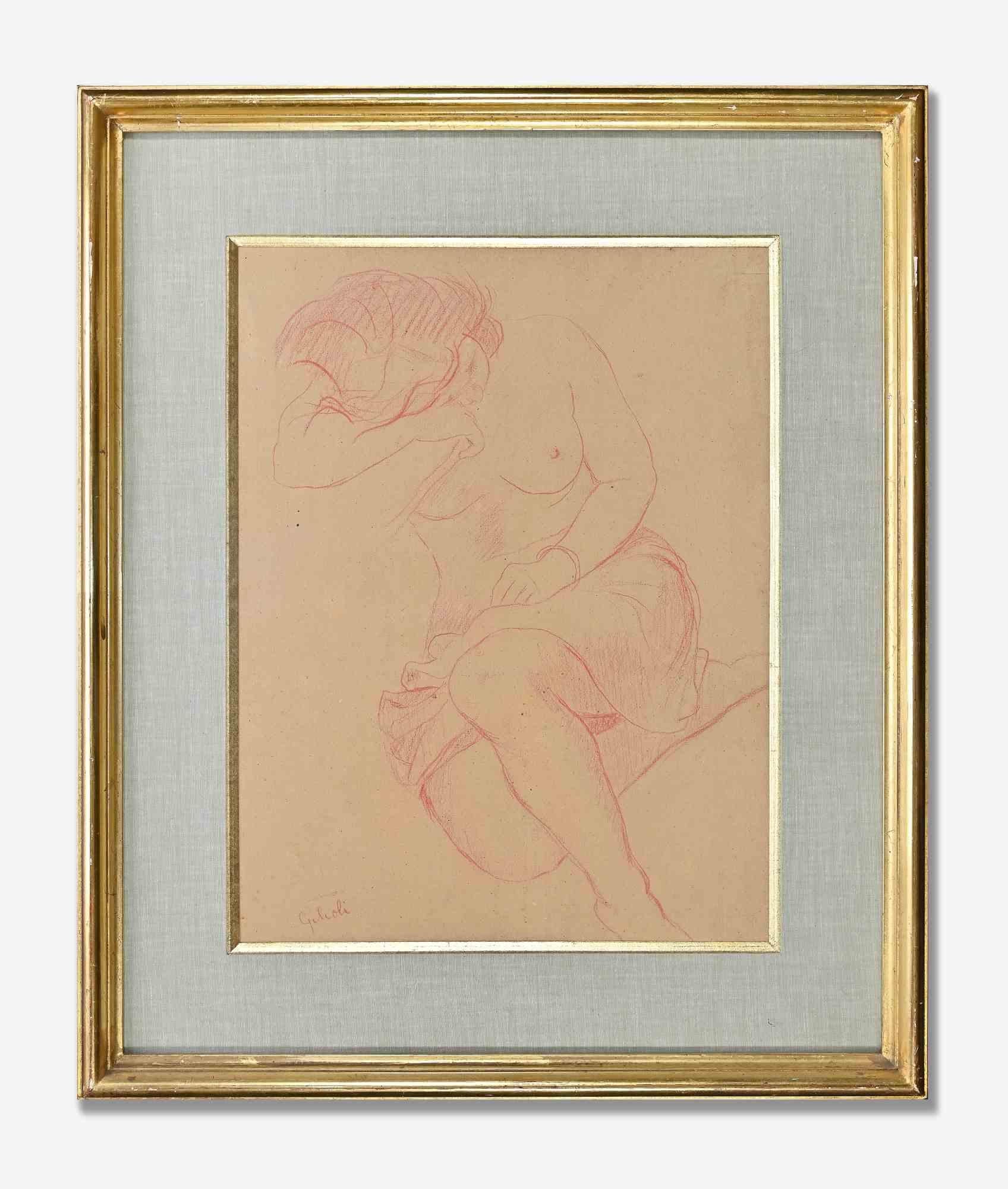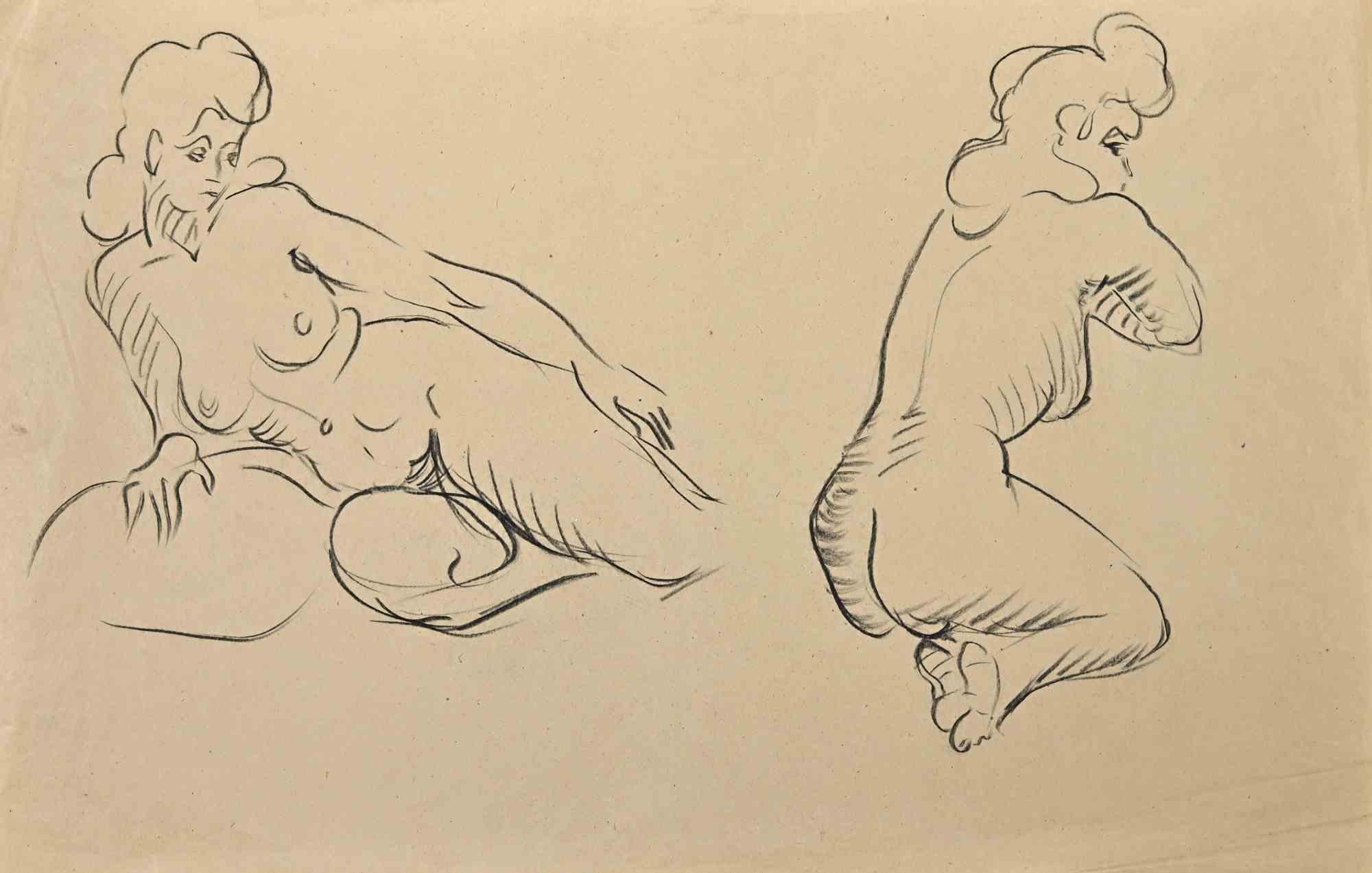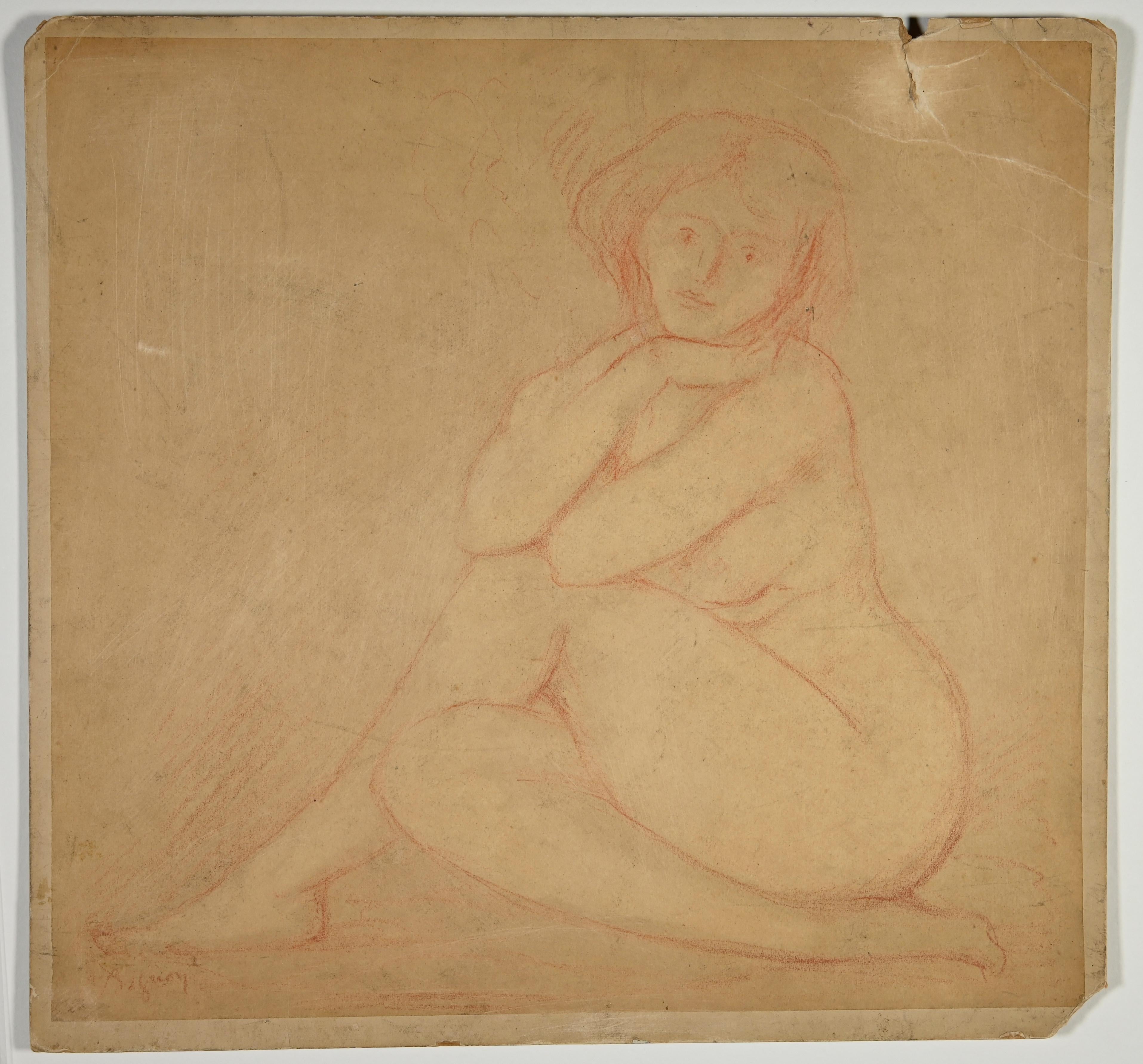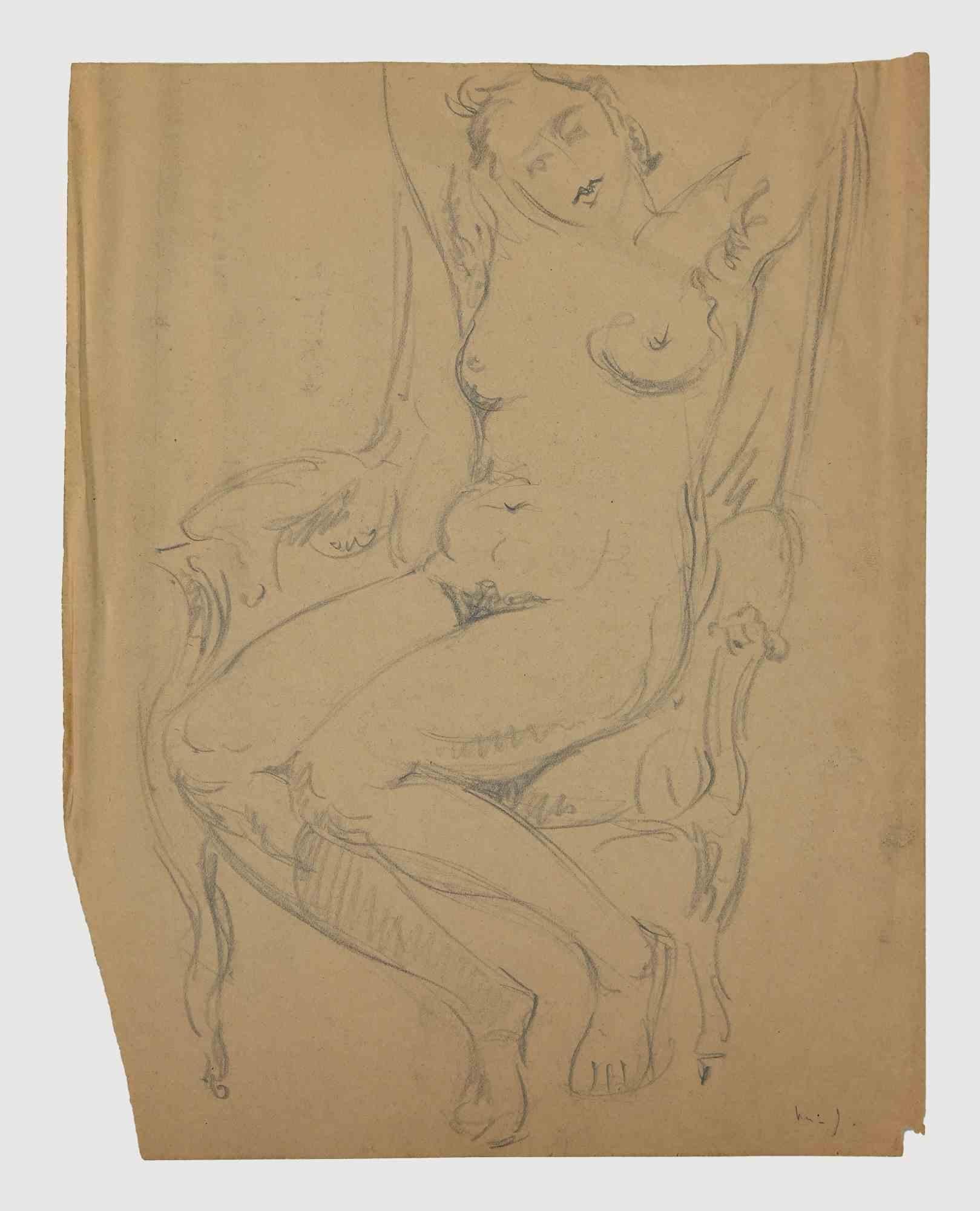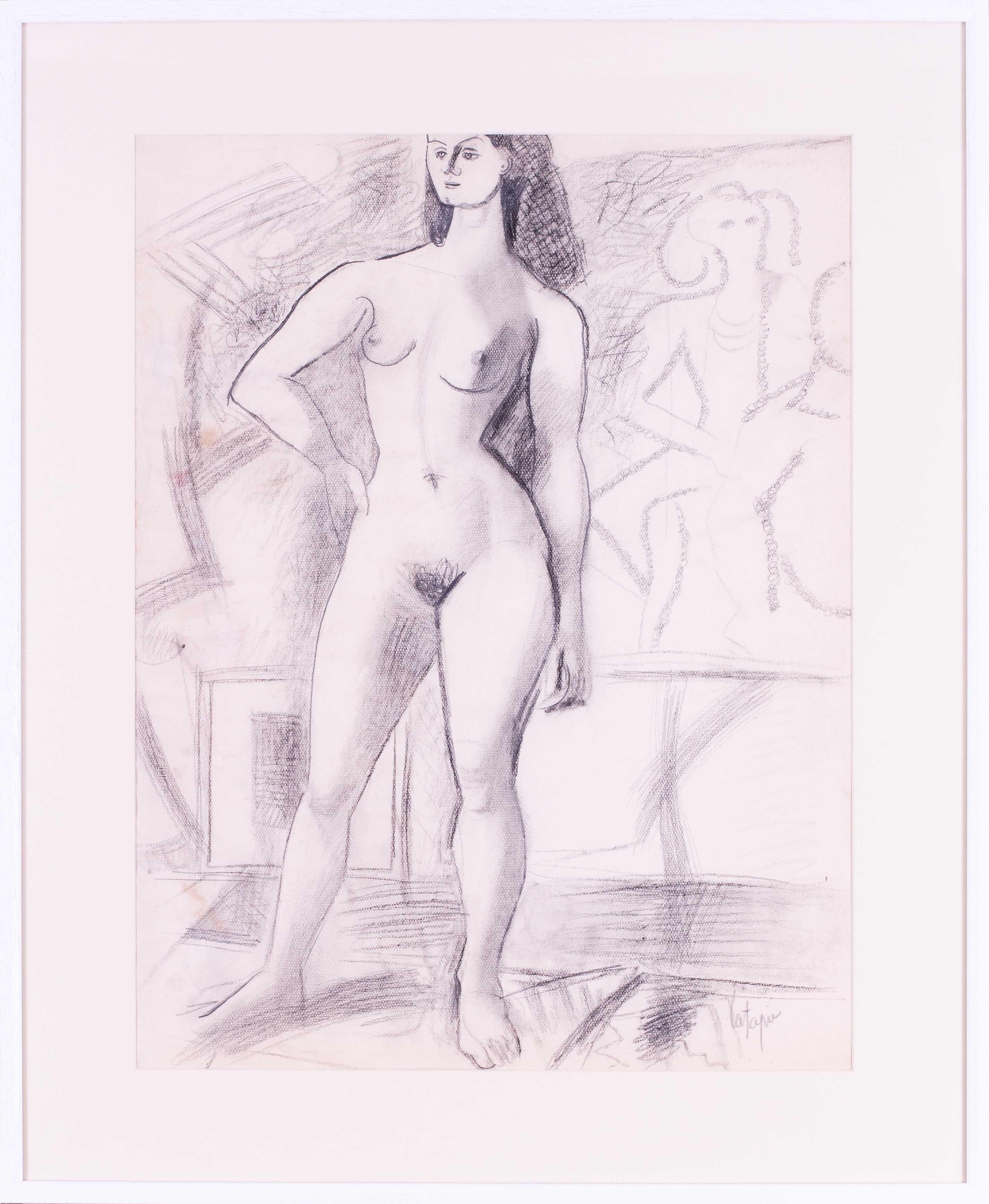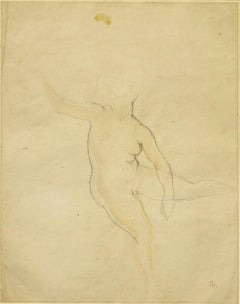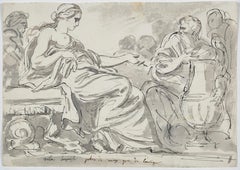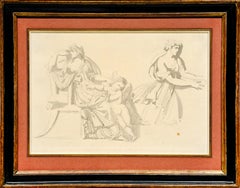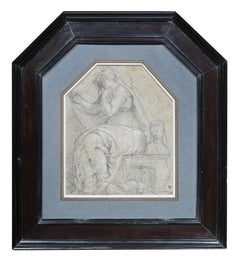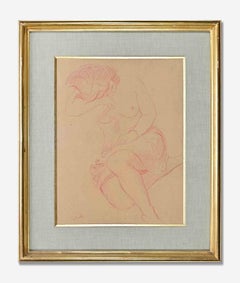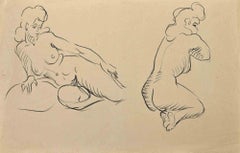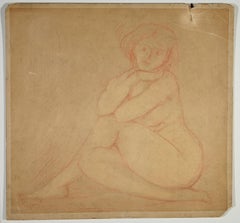Items Similar to Study for the Spring (preparatory to the Four Seasons) by René-Marie Castaing
Want more images or videos?
Request additional images or videos from the seller
1 of 13
René-Marie CastaingStudy for the Spring (preparatory to the Four Seasons) by René-Marie Castaing
$4,725.81
£3,542.29
€4,000
CA$6,492.46
A$7,248.22
CHF 3,797.96
MX$88,725.34
NOK 48,234.12
SEK 45,478.65
DKK 30,449.46
About the Item
René-Paris Castaing, winner of the Grand Prix de Rome in 1924, left a large body of work, both sacred and secular. Many churches in the Pyrénées-Atlantiques, in South-West France still bear witness to the diversity of his talent. In 1942, he began a major decoration project for the Château de Diusse, in the north-east of the county, including an allegory of the four seasons. The vigorous pastel we are presenting here is a study for Spring, depicted as Flore undressing. This commission was a veritable swan song for the artist, who died a year later at the age of 47.
1. René-Marie Castaing, the great inter-war painter in Pau
René-Marie Castaing was born in Pau on December 16th 1896. His father, Joseph Castaing, was also a painter: he was the official portraitist of Pau's high society, which was particularly cosmopolitan at the end of the century, when many rich foreigners spent the winter in Pau, taking advantage of the mild weather to enjoy an outdoor lifestyle punctuated by hunting, horse ridings and golf.
René-Marie Castaing was admitted to the Ecole Nationale Supérieure des Beaux-Arts in Paris in April 1920 and entered the studio of Paul-Albert Laurens (1870-1934). In 1924, he was awarded the First Grand Prix de Rome for Painting, which earned him a stay at the Villa Médicis for more than three years. He then returned to Pau in 1928, where he lived until his death.
Castaing's work is marked by the academic tradition, in which drawing plays as important a role as painting. Although his drawings are often sketches that help to set up large painted compositions, they stand as independent artworks in which the artist fully expresses the vivacity of his talent.
Castaing was a fervent Christian and religious painting played an essential part in his work, as shown by the decorations he created for the churches of Bizanos, Borce, Bidache and Salies-de-Béarn. The painter also created several secular decorations, such as that for the dining room of the Villa Saint-Basil's in Pau in 1935, and the Hunting at the Albret’s time commissioned in 1940 by the Prefecture of Pau. The décor created in 1942-1943 for the Château de Diusse, a mansion located north-east of Pau, was his last large-scale décor, as the painter died shortly after its completion on December 8th 1943.
2. Description of the drawing
Our pastel depicts an eminently secular theme: Spring is embodied by Flore, crouching on the ground with one knee touching the ground. She reveals her ample bosom by removing her shirt, her arms raised above her shoulders to undress.
Given Castaing's classical training at the Beaux-Arts and the influence of ancient statuary on his work, we might be tempted to compare the position of our Spring with that of the Venus of Vienna (eigth photo in the gallery), a sculpture from the 2ème century BC in the Louvre, which is in a similar position, though with the right knee on the ground (and not the left one as in our drawing). Our drawing can also be compared to the Flore by Carpeaux (ninth photo on the gallery), an artist who also inspired Castaing for another painting for Diusse representing Dancing.
The choice of this position (which was probably very uncomfortable for the model!) enabled the artist to achieve a technical tour de force in the foreshortened representation of the bent leg, depicted from three-quarter view.
3. The decoration of the Château de Diusse
Diusse is a small village near Garlin in the north-east of the Pyrénées-Atlantiques county, and this mansion was built in the 17th century. In the early 1940s, it belonged to an industrialist, Elie Sansoube, who commissioned René-Marie Castaing to paint a series of canvases to decorate the interior of his house.
Produced between 1941 and 1943, this series included several allegories executed in colours evocating red chalk: Hunting, Fishing, Dancing and finally The Four Seasons, evoked in a style reminiscent of Rubens, as well as illustrations of two Perrault fairy tales, Cinderella and Sleeping Beauty treated in the manner of Boucher.
The Four Seasons is the largest canvas in the series. Measuring almost 6 meters long and 2 meters high, it features a long frieze of voluptuous female figures, surrounded by puttis in comical attitudes. On the left Flora, the allegory of Spring, is undressing; she is followed by Ceres asleep in the hay (symbolizing Summer). On the right, two equally naked young women are picking the fruits of Autumn, while Winter is represented on the right by a woman huddled in a large cloak.
This décor, which remained in place until 2004, was unfortunately dispersed when the property was sold and auctioned on 3 June 2004.
4. Framing and mount
The original composition was much wider, but the paper, typical of the poor-quality paper that was the only paper available during the war years, is heavily pitted on the sides. The drawing has been presented with a reduced view for a long time. As this view is now slightly tainted, we have preferred to keep this set-up when refreshing the mount.
The drawing is sold unframed but it can also be purchased with its original Art Deco-style silver-plated wooden frame from the 1940s (price for the frame on request - shipping cost to be evalutated).
Bibliography
Annie Roux-Dessarps - René Marie Castaing Decorative works - Cairn Pau 2006
- Creator:René-Marie Castaing (1896 - 1943, French)
- Dimensions:Height: 32.5 in (82.55 cm)Width: 22.44 in (57 cm)
- Medium:
- Movement & Style:
- Period:
- Framing:Framing Options Available
- Condition:View: 21” x 11 7/16” (53.5 x 29 cm) - framed : 36 7/16 x 26 ¾”(93 x 68 cm) Signed by the artist and dated 41 Provenance: the artist's family. An inscription on the reverse indicates that the drawing belonged to Michel Castaing, the artist's son.
- Gallery Location:PARIS, FR
- Reference Number:1stDibs: LU1568212383782
About the Seller
5.0
Vetted Professional Seller
Every seller passes strict standards for authenticity and reliability
Established in 2020
1stDibs seller since 2021
10 sales on 1stDibs
Typical response time: 2 hours
- ShippingRetrieving quote...Shipping from: PARIS, France
- Return Policy
Authenticity Guarantee
In the unlikely event there’s an issue with an item’s authenticity, contact us within 1 year for a full refund. DetailsMoney-Back Guarantee
If your item is not as described, is damaged in transit, or does not arrive, contact us within 7 days for a full refund. Details24-Hour Cancellation
You have a 24-hour grace period in which to reconsider your purchase, with no questions asked.Vetted Professional Sellers
Our world-class sellers must adhere to strict standards for service and quality, maintaining the integrity of our listings.Price-Match Guarantee
If you find that a seller listed the same item for a lower price elsewhere, we’ll match it.Trusted Global Delivery
Our best-in-class carrier network provides specialized shipping options worldwide, including custom delivery.More From This Seller
View AllStudy for "Getting up" – 1955, a preparatory drawing by Balthus (1908 -2001)
By Balthus (Balthasar Klossowski de Rola)
Located in PARIS, FR
In 1955, as he was residing at the Château de Chassy in the Morvan for two years, Balthus created a large painting entitled "Getting up". Balthus was inspired for this painting by t...
Category
1950s Modern Nude Drawings and Watercolors
Materials
Watercolor, Pencil
Study in the Antique Style, a neoclassical drawing by Augustin Pajou
Located in PARIS, FR
In this lively and fresh drawing, probably taken from one of the artist's notebooks, Pajou presents us with a composition freely inspired by antiquity, as a souvenir of a visit to th...
Category
1750s Old Masters Figurative Drawings and Watercolors
Materials
Ink
Frieze of antique figures, a drawing by the sculptor Antoine-Denis Chaudet
Located in PARIS, FR
Faithful to the neo-classical taste, sculptor Antoine-Denis Chaudet presents us with a frieze of antique figures executed in gray wash over pencil strokes, which is likely inspired b...
Category
Early 1800s Old Masters Figurative Drawings and Watercolors
Materials
Paper, Pencil, Ink
Allegory of Chastity, a drawing attributed to G. Porta with great provenance
Located in PARIS, FR
This magnificent drawing from the Venetian Renaissance intrigues us in many ways. It depicts an allegorical composition whose meaning partly escapes us: a veiled figure seated on a stone bench (which we have identified as Chastity), seems to be turning away from a woman's bust beside her, below which are two rabbits, a traditional allegory of fertility, but also sometimes of lust.
This drawing, executed on blue paper, undoubtedly belongs to the Venetian Renaissance. The inscriptions on the back of the old mounting board indicate the various attributions considered by its last owner, the British painter and art historian Sir Lawrence Gowing. We have retained the attribution to Giuseppe Porta proposed by art historian John Arthur Gere as the most relevant.
We were incredibly fortunate to find a hexagonal frame of a very similar format for this drawing, the upper corners of which were formerly cut (irregularly). This 17th-century Dutch frame comes from an aristocratic collection in Lombardy, and creates a kind of fascinating chase around this Venetian drawing...
Category
16th Century Figurative Drawings and Watercolors
Materials
Chalk
Studies for the Judgment of Solomon, a double-sided drawing by Simone Cantarini
Located in PARIS, FR
In this double-sided red chalk study, Simone Cantarini offers us a double reflection on the theme of the Judgment of Solomon. This sheet reveals his precise style and his sense of de...
Category
1640s Old Masters Figurative Drawings and Watercolors
Materials
Chalk, Laid Paper
A Study for the Angel of Saint-Severin church in Paris, by Paul Flandrin
Located in PARIS, FR
After the restoration of the Saint-John chapel’s frescoes at the Saint-Severin church in Paris in 2022, the drawing presented here is a moving testimony to their creative process. It...
Category
1840s Old Masters Figurative Drawings and Watercolors
Materials
Chalk
You May Also Like
Marcel GROMAIRE (1892-1971), female nude
By Marcel Gromaire
Located in Paris, FR
Marcel Gromaire (1892 – 1971) was a French painter. He painted many works on social subjects and is often associated with Social Realism, but Gromaire can be said to have created an ...
Category
1950s French School Nude Drawings and Watercolors
Materials
Paper, Ink, Pen
Nude of Woman - Drawing by Emile Gilioli - Mid 20th Century
By Émile Gilioli
Located in Roma, IT
Nude of woman is an original modern artwork realized in the half of 20th century by the french artist Emile Gilioli.
Sanguine drawingon light brown paper.
The artwork is hand signe...
Category
Mid-20th Century Contemporary Figurative Drawings and Watercolors
Materials
Pencil
Posing Nude - Drawing by Jean Chapin- 1950s
By Jean Chapin
Located in Roma, IT
Posing Nude is a charcoal drawing realized by Jean Chapin in the 1950s.
Good condition and aged with slight folding on the margins.
Jean Chapin is a French painter and lithographer...
Category
1950s Modern Figurative Drawings and Watercolors
Materials
Paper, Charcoal
Nude of Woman - Drawing by Emile André Leroy - 1930s
Located in Roma, IT
Nude of Woman is an artwok realized by the French Artist Emile André Leroy.
Pastel Drawing on paper. Hand Signed in the left margin.
Good conditions except fo a small tear in the r...
Category
1930s Modern Nude Drawings and Watercolors
Materials
Paper, Pastel
Nude - Original Drawing - Early 20th Century
Located in Roma, IT
Nude is an original drawing in pencil realized by an anonymous artist in the early 20th Century.
Good conditions except for some foxings.
The artwork is depicted through strong str...
Category
20th Century Modern Figurative Drawings and Watercolors
Materials
Pencil
French Post Impressionist nude drawing by French 20th Century artist Latapie
Located in Petworth, West Sussex
Louis Robert Arthur Latapie (French, 1891-1972)
La Modele
Black crayon
Signed `Latapie’ (lower right)
24.5/8 x 19 in. (62.5 x 48.3 cm.)
Category
20th Century Post-Impressionist Nude Drawings and Watercolors
Materials
Paper, Crayon
More Ways To Browse
The Four Seasons
Four Seasons Paintings
Four Seasons Series
Fairy Drawing
Female Nude Art Deco
Naked Drawing
Nude With Horse
Female Nude Drawing Sketches
Large Female Nude Drawing
Silver Women Nude
Nude On Horse
1940s Art Deco Drawing
French Academic Nudes
Nude Woman Sketch
Original Nude Art Deco
1920 French Nude Paintings
Art Deco Women Paintings
Frieze Drawing
